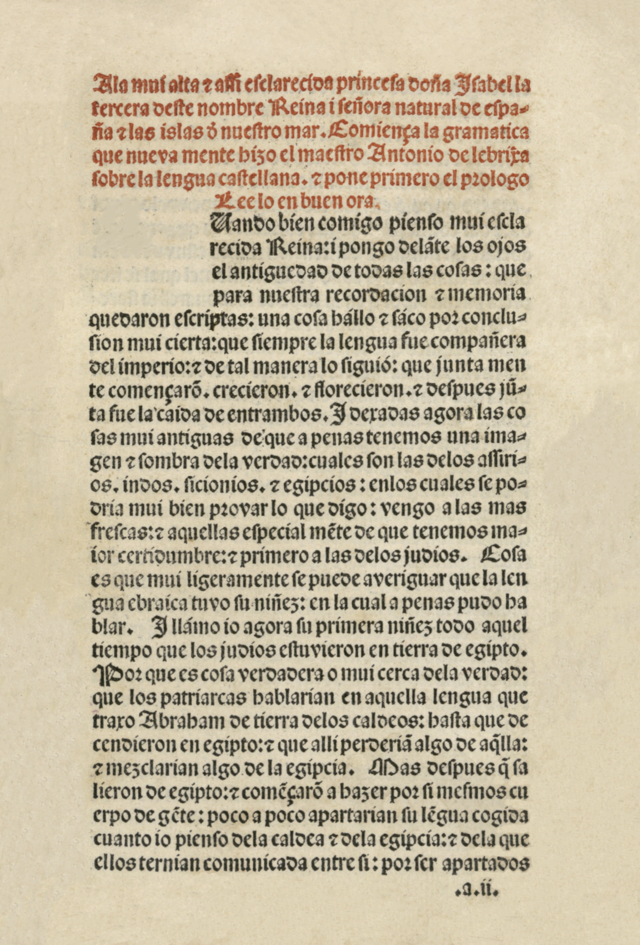Loading AI tools
1492 book on the grammar of the Spanish language by Antonio de Nebrija From Wikipedia, the free encyclopedia
Gramática de la lengua castellana (lit. 'Grammar of the Castilian Language') is a book written by Antonio de Nebrija and published in 1492. It was the first work dedicated to the Spanish language and its rules, and the first grammar of a modern European language to be published. When it was presented to Isabella of Castile at Salamanca in the year of its publication, the queen questioned what the merit of such a work might be; Fray Hernando de Talavera, bishop of Avila, answered for the author Nebrija in a letter addressed to the monarch:
After Your Highness has subjected barbarous peoples and nations of varied tongues, with conquest will come the need for them to accept the laws that the conqueror imposes on the conquered, and among them our language; with this work of mine, they will be able to learn it, as we now learn Latin from the Latin Grammar.[1][2]
This article needs additional citations for verification. (March 2009) |

Nebrija divided his study of the language into four books:
A fifth book was dedicated to the teaching of Spanish as a foreign language.
The book established ten parts of speech: nouns, pronouns, verbs, participles, prepositions, adverbs, interjections, conjunctions, gerunds and supines.
Works had previously been published on Latin usage, such as Lorenzo Valla's De Elegantiis Latinae Linguae (1471), but Grammatica was the first book to focus on the study of the rules of a Western European language besides Latin. Following its publication, grammar came to be considered as the discipline concerned with the rules of language, until the advent of linguistics as a scientific discipline in the 19th century.
Other grammars of the Spanish language followed:
Seamless Wikipedia browsing. On steroids.
Every time you click a link to Wikipedia, Wiktionary or Wikiquote in your browser's search results, it will show the modern Wikiwand interface.
Wikiwand extension is a five stars, simple, with minimum permission required to keep your browsing private, safe and transparent.